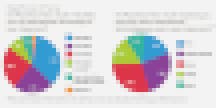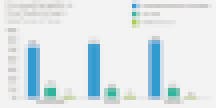When “Disrupting Class” was published in 2008, we caused a stir by predicting that by the fall of 2019, 50 percent of all high school courses would be delivered online in some form or fashion.
That forecast was rooted in a sense of optimism—that as digital learning tools and opportunities proliferated in schools, educators would increasingly be able to tailor their instruction to meet students’ different needs.
Students enter school with different skills, backgrounds and experiences. The science of “learner variability,” as it has become known, aims to study the range of cognitive, social and emotional skills—as well as health and psychological well-being—they bring into the classroom. This field was in its infancy at the time when the book was published, but it has progressed significantly since.
Digital Promise, an education research nonprofit, boasts an entire center devoted to understanding the meaningful differences between learners (aptly called the Learner Variability Project). It recently released a survey of 1,880 adults that seeks to understand how teachers, parents and the public view learner variability, students’ ability to reach high levels of academic achievement, and the use of education technology.
To our prediction that half of all high school courses would be online in one way or another by fall 2019, the survey shows we are moving in that direction. Thirty-five percent of teachers say they use edtech daily, and another 23 percent say they use it most days. That suggests that more than half of the teachers polled use technology frequently in the classroom.

To be clear, that is hardly confirmation that our prediction was correct (researchers stopped collecting the data in 2007 that we used to make that prediction), but it is a sign that digital learning has grown rapidly.
What’s far more interesting, however, is whether the growth of digital learning has led to the creation of an educational system that can serve students’ different learning needs.
There I think our hopes have fallen short, which Digital Promise’s research seems to confirm.
A large majority of respondents say that students are not reaching high levels of educational achievement today. Despite the rapid growth of digital learning, a minority of those polled say that schools adequately address learner variability. Only 35 percent of the general public say schools are doing a good job at this.
More telling, only 20 percent of the general public, 31 percent of parents and 39 percent of teachers believe schools regularly and effectively tailor instruction to meet the needs of individual students today.
On the other hand, the majority of respondents—more than three-quarters of teachers, parents and the public—agree that most students can achieve at high levels with appropriate supports. Even more believe that students vary a good deal across cognitive, social and emotional, and background indicators relevant to how they learn.

And 80 percent of the general public say that tailored instruction is a better way for students to learn than whole-group instruction, the traditional practice of a teacher lecturing in front of a classroom.
But here’s where things get murkier. Strong majorities believe all students will benefit a “good” deal from tailoring learning, but very few believe it will help a “great” deal. Far more believe that only gifted students and those with learning disabilities will benefit a lot from tailoring learning.
My gut is that far too many schools have crammed edtech into their existing classrooms and merely layered it over existing whole-group instruction, rather than use it to support teachers in crafting new models of tailoring learning. People either don’t see the payoff in working to radically adapt the learning environment to tailor learning for all—or are deterred by the challenges that come with making big changes.
That belief could help explain why, despite the growing adoption of edtech, these tools have not helped every student reach their full potential.
Using technology effectively in the classroom has been the focus of decades of research. But it’s not clear whether teachers are aware of these findings or can access them. According to the Digital Promise survey, a whopping 96 percent of teachers say they “rely a great deal or good amount on their experience” to inform their practice, and 90 percent say rely on their instincts. But only 53 percent say they consult academic research. (Another conclusion, of course, could be that academic research isn’t that helpful.)
Put together, the report helps explain why the majority of respondents believe in the ample edtech they have and its potential to help learners, yet also don’t think it has helped all that much.
I ultimately believe the report offers hope for the future. Those in the general public who believe most students are capable of high levels of achievement and in learner variability are most likely to believe that all students could benefit from tailored learning, even in classrooms that combine whole group, small group, and individualized learning. For teachers, believing in subject-specific learner variability is most likely to predict the same.
That means we need to double down on educating people about learner variability and the potential—without a lot of added resources—of introducing new models of learning that take advantage of technology to tailor learning, and not focusing on edtech as a magic bullet in and of itself.


